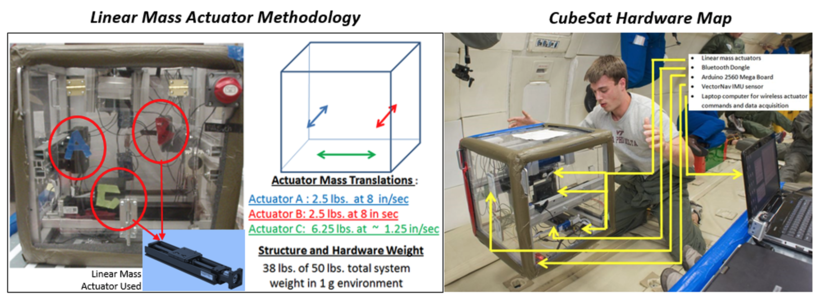
Microgravity at Virginia Tech
Summary
I was fortunate to be involved in a startup team that participated in the selective NASA’s Reduced Gravity Student Flight Opportunities Project in 2012 and 2013. Our experiment was chosen each year and our team spent each academic year campaigning, building, and testing our experiment leading up to our flight in NASA’s Zero Gravity aircraft.
Manipulating a satellite’s unstable position in space (i.e., spinning around more than one axis) traditionally requires unsustainable and resource-consuming solutions, such as momentum wheels and gyroscopes. The solution, proposed by the Virginia Tech Microgravity Team, involved a simple idea: can the conservation of momentum be used to move mass within the satellite to reduce undesired motion? A proved-out method would significantly increase the use case for utilizing the satellites own mass to control its attitude, as opposed to heritage methods. Doing so reduces the mass of satellites, thus cutting launch costs and enabling satellites to be of greater affordability. The team was able to demonstrate this concept with a small satellite and tested on NASA’s Zero Gravity aircraft. Key test data from the field was gathered, and was instrumental for future research proposals and graduate dissertations. Up until then, viable this data had never been acquired. I was a key contributor to the team; involved in proposal development, and hardware/software implementation of the CubeSat.
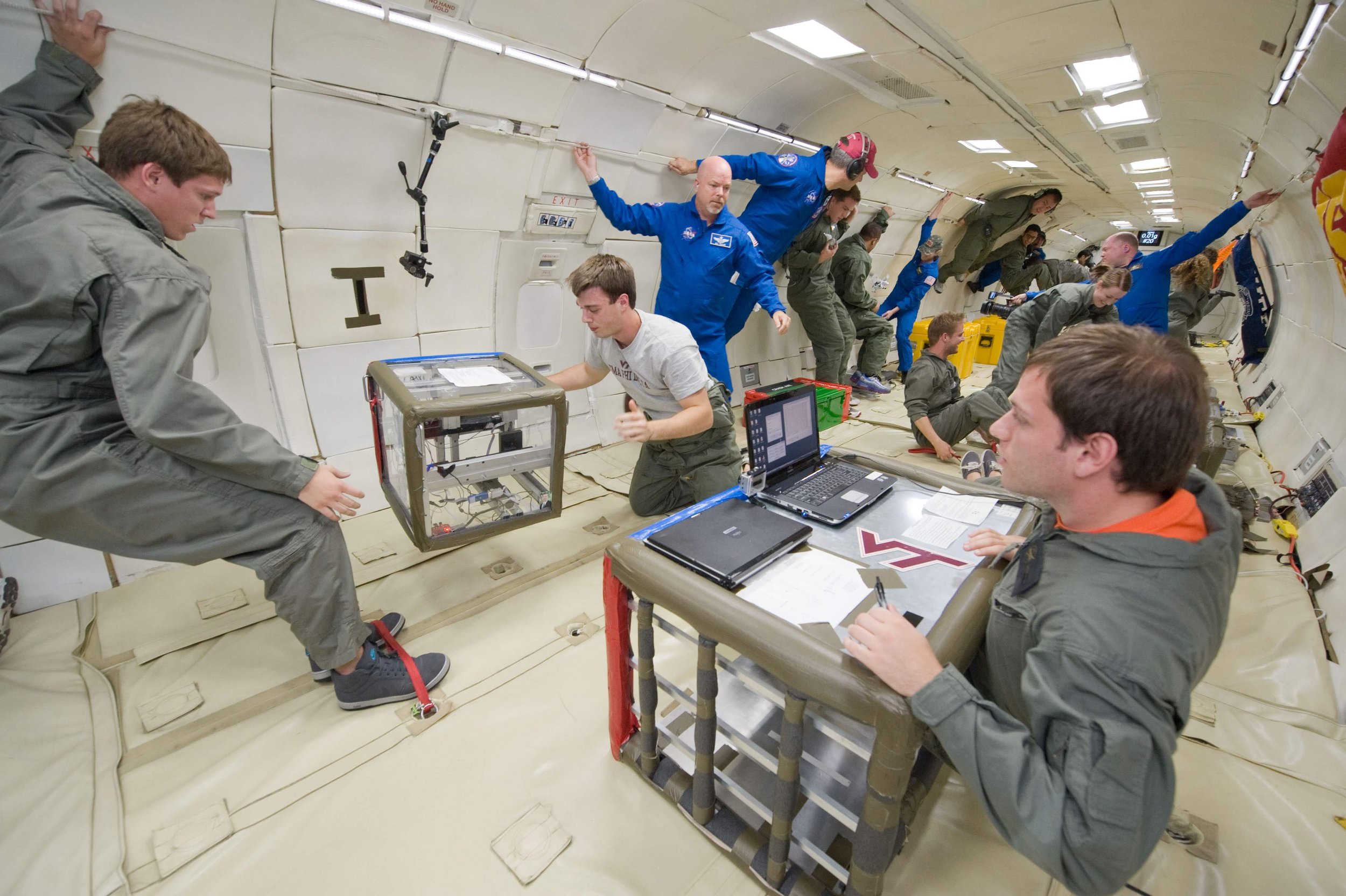
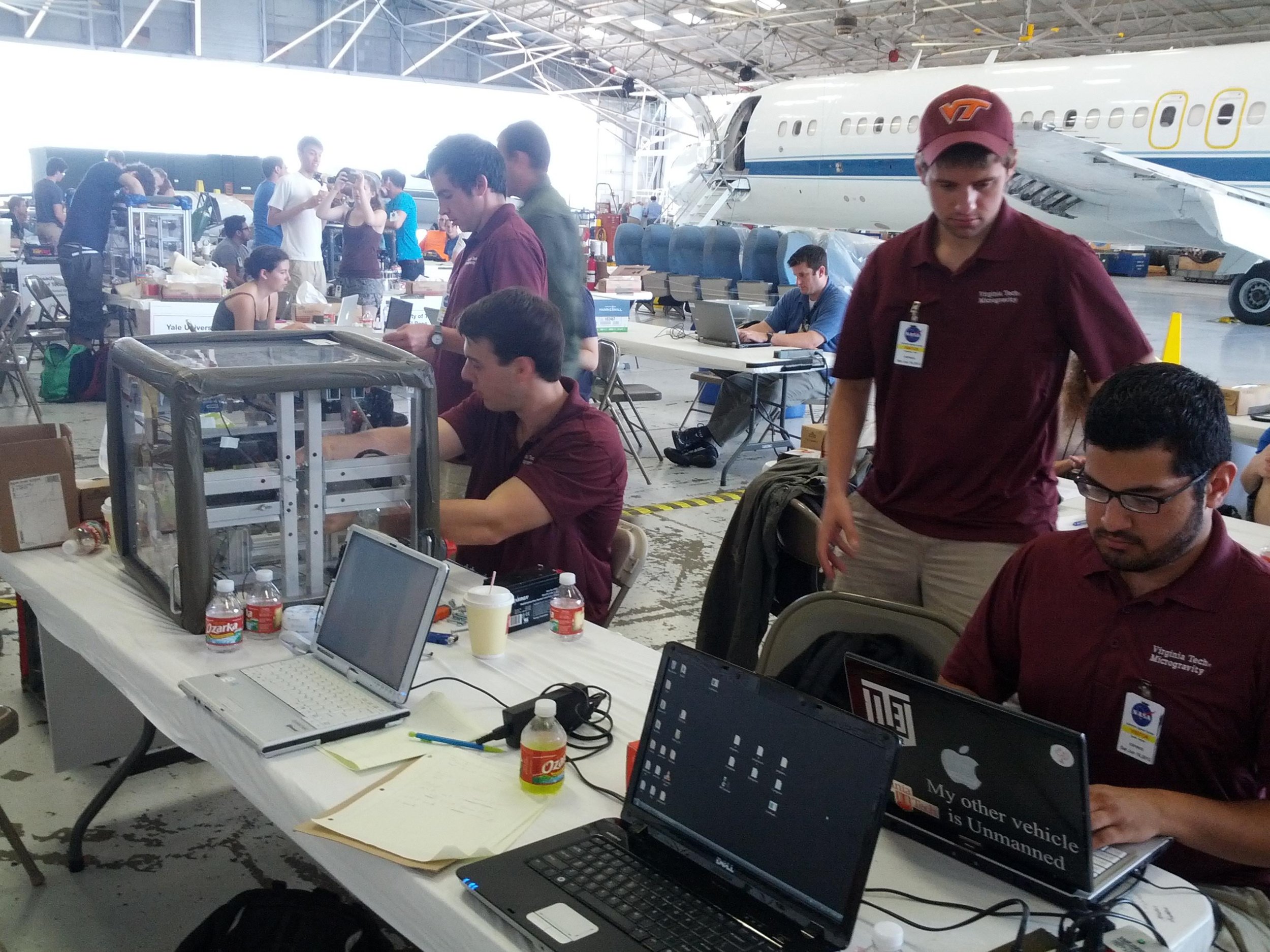

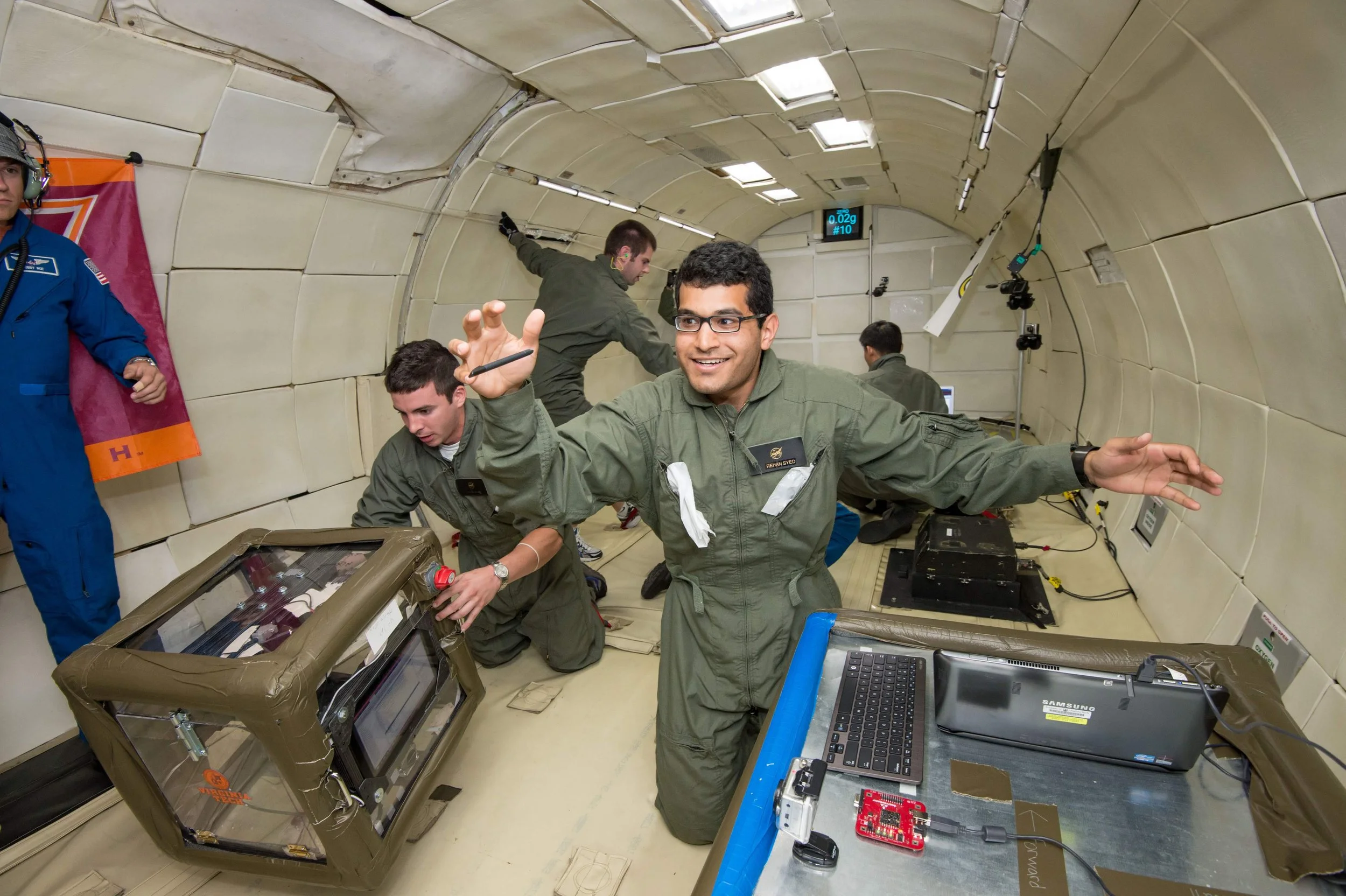
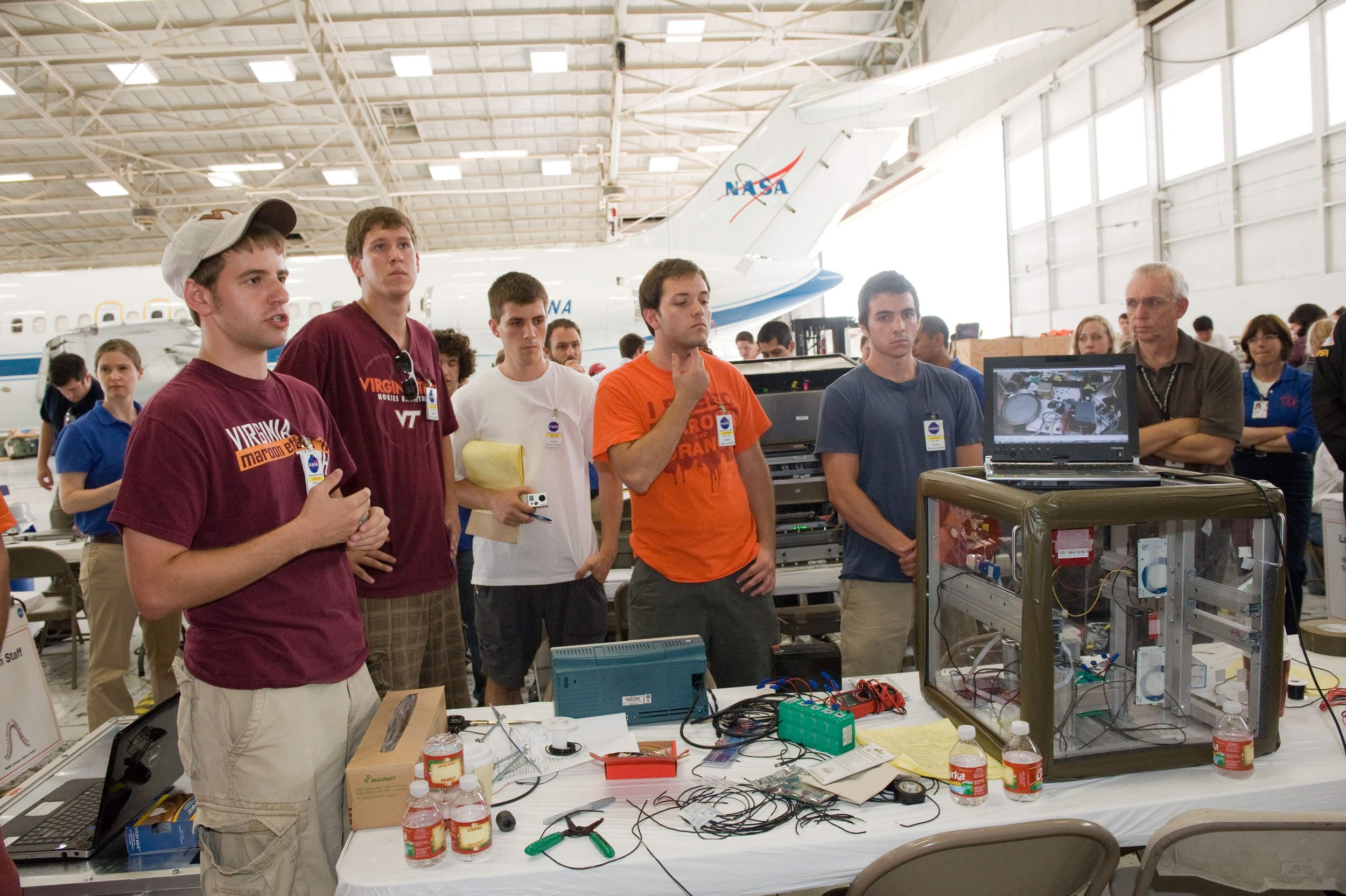
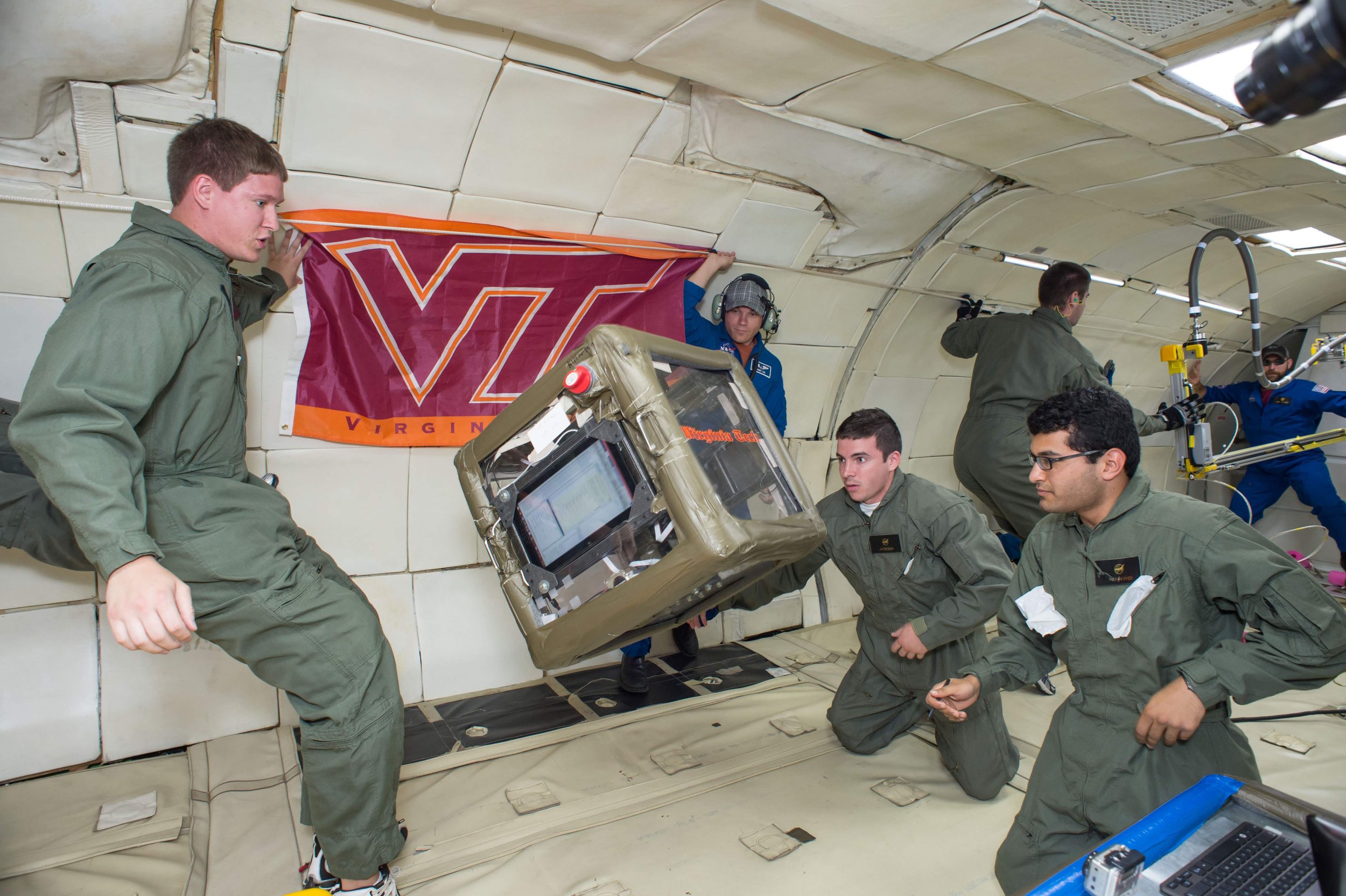
Conclusion
The experiment was conducted successfully, and the test data extracted was used to prove out control law theories of multiple graduate school dissertations and research white papers. This garnered interest in further funding to the Virginia Tech Aerospace Department to pursue this concept in more satellite instability scenario research analysis for industry use.

